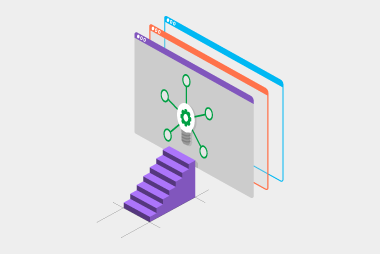eInvoicing has emerged as a game-changer in streamlining invoicing processes around the world. One key element facilitating the adoption of Peppol eInvoicing is the presence of service providers, or Access Points. Read on to see what they are and why they’re important.
Facilitating connectivity
Access Points act as intermediaries, connecting businesses to the eInvoicing network. They provide the technical infrastructure and expertise to integrate with the Peppol network and exchange eInvoices between trading partners.
Ensuring compliance
Access Points play a vital role in ensuring compliance with Peppol eInvoicing standards set by the OpenPeppol and the local Peppol authorities, the Australian Taxation Office (ATO) and the Ministry of Business, Innovation and Employment (MBIE). This ensures that eInvoices exchanged between you and your customers and suppliers meet the required standards, including data structure, formatting and security protocols.
Data validation and enrichment
Some Access Points offer features that enhance the quality and accuracy of eInvoices. Through automated validation, they can check invoice data for accuracy, ensuring that it meets the necessary requirements and is error-free. Access Points may also offer enrichment capabilities, such as automatically populating missing information or validating invoice line items against relevant catalogues, improving efficiency and reducing manual efforts.
Integration with existing systems
Integrating eInvoicing with existing accounting and enterprise resource planning (ERP) systems can be seen as a challenge. Service providers understand this challenge and offer solutions that seamlessly integrate with businesses' existing software infrastructure. This integration enables businesses to generate eInvoices directly from their existing accounting systems, eliminating the need for manual data entry or switching between multiple platforms.
Supplier onboarding and support
Service providers assist businesses in onboarding their suppliers onto the eInvoicing network. They offer guidance and support, helping suppliers understand the benefits of eInvoicing and providing tools for seamless onboarding. We offer our customers and their suppliers a free eInvoicing portal, Colladium, so suppliers can easily create and send eInvoices from a web browser. MessageXchange also use dedicated customer support teams based in Australia to address any technical issues or queries that businesses or their trading partners may encounter during their eInvoicing journey.
Access Point providers are crucial enablers in the successful adoption of eInvoicing in Australia and New Zealand. Their expertise, infrastructure, and support facilitate connectivity, ensure compliance, enhance data quality, enable system integration, and provide assistance throughout the onboarding process. By partnering with a reliable Access Point, businesses can accelerate their eInvoicing implementation, reduce costs, improve efficiency, and strengthen relationships with trading partners.
Why choose MessageXchange?
- Experience
Over 20 years' experience in eInvoicing and EDI, providing automation services for some of Australia's largest companies. - Onboarding solutions
We offer Colladium for free so you can easily onboard your suppliers and customers to send and receive e-invoices. - Based in Australia
Local support, account management and technical teams.
Getting started
[vc_column width="1/3"]
Check your software
[vc_column width="1/3"]
Our team connects you to the Peppol eInvoicing network
[vc_column width="1/3"]
Go live!
Ready to implement eInvoicing in your business or want to learn more? Ask our experts by getting in touch below.
Request a call
Chat with one of our experts
Just fill out your details below and we'll be in touch within one business day.

